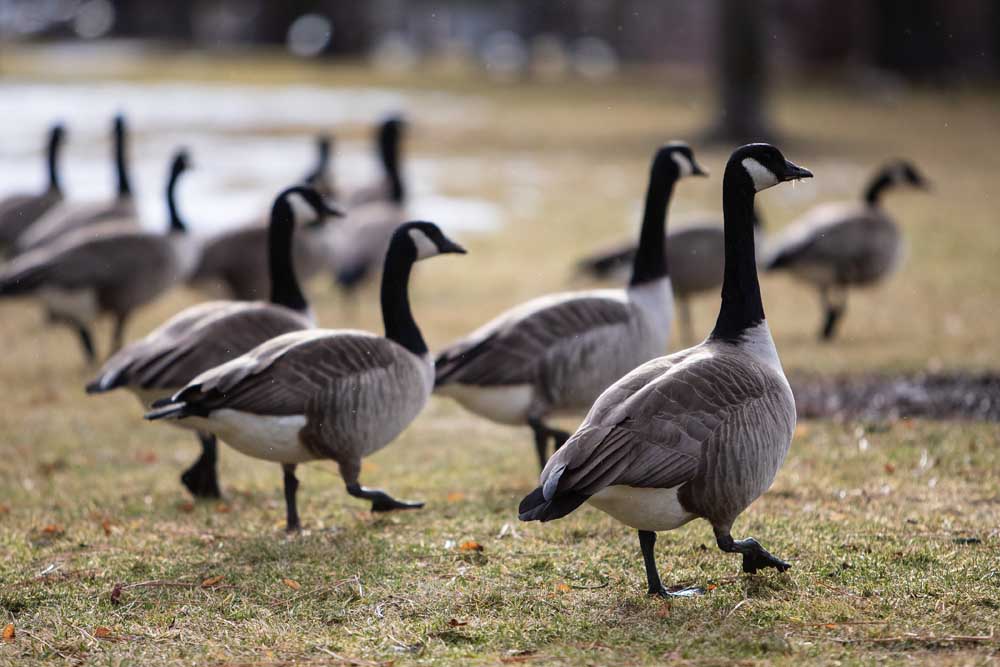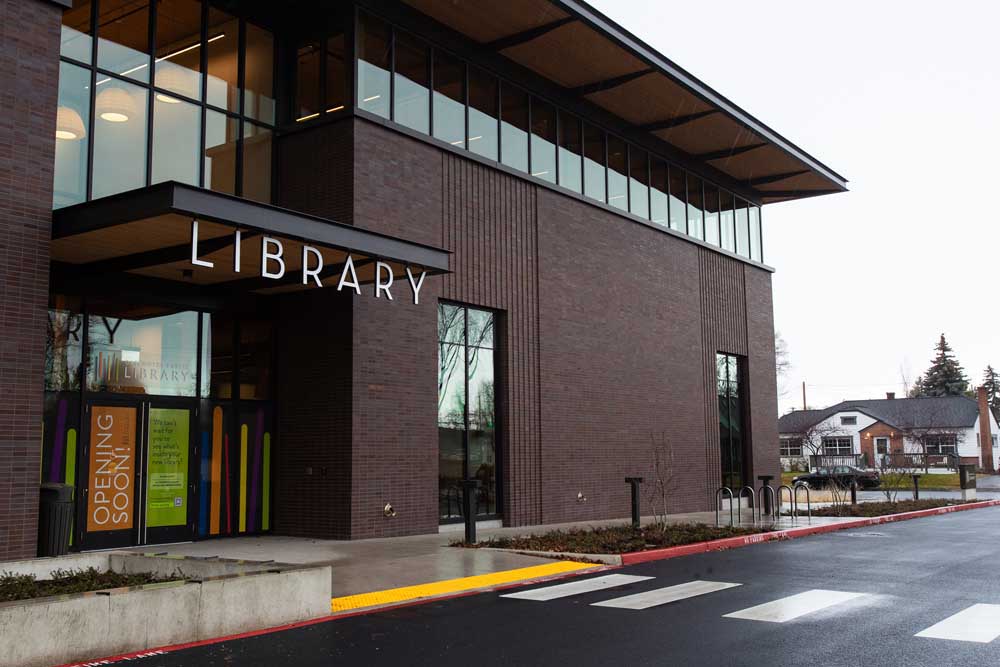Honk! Everything you could ever want to know about Bend’s resident geese
Published 8:30 am Monday, January 29, 2024

- Geese walk through Drake Park while grazing on Friday in Bend. Geese and people in Bend enjoy a sometimes tense relationship. Over the years, population control strategies have ranged from hand-feeding geese birth control to driving them away with lasers.
On a recent Wednesday, a flock of Canada geese temporarily blocked traffic on SW Bond Street. Several cars stopped going in either direction as the geese lazily meandered across the street, seemingly oblivious to the fowl disturbance.
It was just another reminder of the occasionally tense coexistence between Bend and its large feathered residents. From hissing to building nests on roofs and littering parks with quantities of poop beyond imagination, humans and geese in Central Oregon haven’t been the most cordial neighbors.
Trending
“This isn’t new,” said Zara Hickman, natural resources and trails manager for Bend Park & Recreation District. “It’s just an ongoing part of living in Bend.”
Hickman would know better than anyone the extent to which these feathered creatures permeate the city because the parks district’s crusade against geese has gone back decades. Over the years, population control strategies have ranged from hand-feeding geese birth control to driving them away with lasers.
In the late 2000s, the park district decided to address the growing issue of goose overpopulation by creating the Canada Goose Management Plan, last updated in 2009.
An important component of coexisting peacefully with geese is public education, which is why The Bulletin sought out Hickman and other experts to answer a few pressing questions about these large waterfowl.
It’s winter. Why are geese still here?
Contrary to what we learn as children, not all geese fly south for the winter. A goose can fall into two migratory patterns. The first pattern is what people typically think of — geese from farther north migrate south to warmer climates.
Trending
But goslings born in more temperate climates, such as Deschutes County, often become what experts call resident geese.
“Bend has a semi-mild climate — if you will — compared to the Yukon or other places in Canada. We have running water in the river throughout the year, so if it doesn’t freeze over, certain populations just become resident, and they don’t migrate like the other ones,” said Hickman.
Two trumpeter swan couples in Central Oregon are raising newborns
Brandon Reishus, migratory game bird coordinator with the Oregon Department of Fish and Wildlife, emphasized this is a typical component of goose behavior.
“As we’ve developed our cities, parks and golf courses, we’ve provided a veritable goose buffet, as geese prefer short green grass for forage,” Reishus said. “These non-migratory flocks have simply expanded in number as we’ve expanded suitable habitats for them.”
Migratory geese can be seen in Deschutes County from very late August through late April and early May. Canada geese fly through from late October through March, said Reishus.
Whose job is it to manage the geese?
In Bend, goose management falls upon the Bend Park & Recreation District. But in practice, goose management is a collaborative effort between the park district, ODFW and the U.S. Department of Fish and Wildlife.
Canada geese, the most common type of goose in Bend, are protected under the federal Migratory Bird Treaty Act. The park district must contact the U.S. Department of Fish and Wildlife for permission to perform mitigation techniques such as gosling relocation.
If geese become a nuisance on private property, landowners must register for federal authorization to remove nests from their properties or remove nuisance geese.
Why are geese such a problem?
Geese have a reputation for being aggressive — and for good reason. These birds are highly territorial and can become defensive towards humans when provoked or defending their young.
“If you’ve run or spent any time in Bend parks, you may have been hissed at once or twice,” Hickman said.
Hickman said resident geese also cause serious degradation to parks. While the park district does not specifically clean up after the geese, goose poop pollutes the water, and the birds trample the ground, making it impossible for the park district to maintain grass or other vegetation.
“It’s just not good for our health, and it’s also not good for the environment. So when you have a concentration of geese, that impact compounds itself. Not only are we interacting with them all the time, but we’re also seeing that impact on our environment and the lands we care for,” Hickman said.
How is the population kept under control
The park district’s approach to goose mitigation hasn’t always been popular, but it is creative.
In 2010, the district infamously rounded up 109 Canada geese from Drake Park into trash cans and gassed them with carbon dioxide. The district then donated the bodies to local food banks. The decision sparked outrage and a candlelight vigil to honor the fallen.
“That happened,” Hickman acknowledged. “But it’s not been part of our tools (since).”
One effective way the district found to harass the geese is employing a volunteer force of certified dogs to annoy the geese into moving on.
Another goose mitigation tactic employed by the park district is oiling goose eggs, which prevents the embryos from developing and the goose parents from laying any more eggs. Typically, geese mate for life, but instances “of what we might call ‘divorce’ have been documented,” Reishus said. If their original mates die, geese are also inclined to get “remarried.” The same applies for eggs. If one egg dies, a goose is more than happy to lay another.
For the goslings that do hatch, the district strives to relocate them out of the park district. Unfortunately, avian flu in goose populations has prevented gosling relocation for several years.
Defending yourself: the basicsBoth Hickman and Reishus said the best defense is to avoid confrontation with geese in the first place.
“The most common situation where people may be attacked by a goose is when they are defending their nests and goslings … Although generally not as serious as an attack by a large mammal, geese are large, powerful birds that can cause injury to humans,” Reishus said.
If a goose does attack, the best course of action is to retreat in the direction you came or away from any nests or goslings. Since geese are territorial, moving away from the area will typically end the attack.
Reishus said that if you are attacked by a goose, be sure to report it to ODFW. But when you do, make sure you’ve got the terminology right.
“The pet peeve of many a biologist or ornithologist is when Canada geese are referred to as Canadian geese. While I’m sure most people don’t see the issue, for us, it’s worse than fingernails scraping a chalkboard,” Reishus said lightheartedly.








